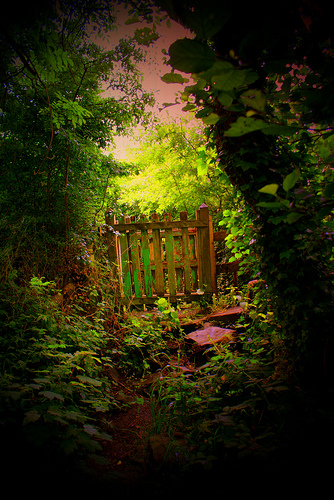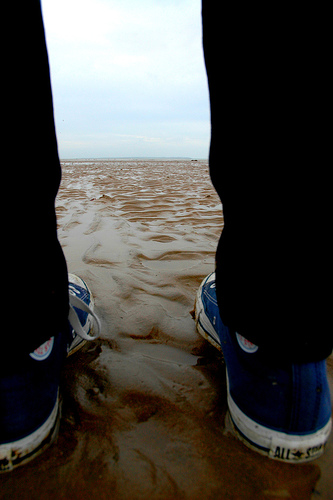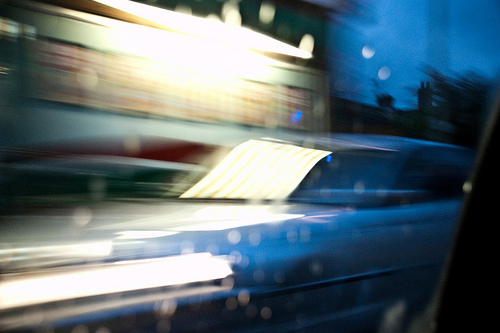Series of Shots for High Tension
In our exploration of using cinematic technique in fiction writing, we began looking at a camera directive called Series of Shots. To reiterate, this is not a montage, which is a palette of images not connected immediately (or necessarily consecutively) in time. A Series of Shots does move consecutively and immediately in time, showing one thing happening quickly after another. We looked at some examples from novels showing this visual fast clip of images and saw the powerful effect this can have in a scene.
Here’s a great scene you might recall from the movie The Fugitive (screenplay by Jeb Stuart and David Twohy, 1993). This is the tense scene where the bus carrying the dangerous convicts on the way to prison crashes onto the railroad tracks—and of course a train is coming and the hero, Kimble, has to get out. This nail-biting scene is bursting with tension, but the screenwriter ramps it up by inserting a series of shots that shoot the tension into the stratosphere.
INT. BUS – NIGHT
Kimble spots keys. Pitches them to Old Guard. Drags Young Guard to the front for a quick exit. But Old Guard fumbles the key ring, his hands shaking as much as the bus. The train light spiderwebs across cracked windows. Kimble snatches the keys away from the Guard’s trembling hands.
KIMBLE
Which one? This? This one?!
Old Guard gulps a nod. Kimble jams a key in the lock. Throws the door open. Grabs Young Guard.
KIMBLE
Help me get him—
But Old Guard climbs right over Kimble’s back and climbs out the shattered windshield.
ANGLE ON REAR OF BUS
Copeland escapes through the hole in the back …
EXT. BUS – NIGHT
… and hits the ground running the other way. The locomotive’s headlight reveals the toppled bus.
INT. BUS – NIGHT
Train light grows. A nanosecond of uncertainty: Should Kimble leave the wounded man? Kimble and the Young Guard hold a look.
EXT. FREIGHT TRAIN – NIGHT
As the WHEELS BRAKE and LOCK.
EXT. RAILROAD TRACKS – NIGHT
Kimble struggles out of the bus—pulling the Young Guard behind him. He slings the man clear.
SCREECHING death, the TRAIN SKIDS closer.
For one heartbeat, Kimble remains perched atop the bus. The train light X-rays him. Kimble leaps. Lands. Rolls. Gains his feet. Tries to sprintway but can’t: His feet are still chained. He gets off a dozen mincing steps before …
IMPACT: A hundred tons of STEEL SLAMS into the bus, splitting it open. Shrapnel rips through Kimble’s thigh, but he stays on his feet, still running feverish half-steps.
An EXPLOSION envelops the train. Flames stream down its flanks. The train burns past the wounded Guard. Kimble looks back, expecting to see the catastrophe behind him. But he gets the shock of his life—of any man’s life:
Still on its wheels, the locomotive is derailing—and coming after him. It’s the stuff of nightmares: One little man being chased by a fire-breathing locomotive.
The train burrows to a stop. Kimble is suddenly five feet taller, standing on an upheaval of earth, staring eyeball-to-eyeball with the train that nearly devoured him. He pants. Coughs on smoke. Then notices something in his hand.
It’s the key ring.
This Series of Shots comprises Close-ups, Inserts, Medium Shots, and Long Shots, but these are all stationary camera shots. Instead of having the camera move and Follow or Pan Kimble as he works his way out of the bus and gets clear of the impending collision, this fast clip of visuals encompassing all the important elements of the scene packs the best punch to leave viewers breathless and gripping the arms of their chairs.
Alternating Scenes with a Series of Shots
Author Colum McCann, in his award-winning novel Let the Great World Spin, does a brilliant job by showing two scenes occurring at the same time—something tricky to do in a novel but easy in a film. The effect is wonderfully cinematic as the reader reads through this Series of Shots that alternates between two events happening at once in two different locales. McCann wanted to have the reader see both scenarios unfolding at the same time, rather than show one complete scene with one set of characters, followed by another scene showing the others. It’s a powerful effect that he’s borrowed from film technique, and it supercharges his novel.
The narrator of this scene is Corrigan’s brother. He’s reflecting back on the accident Corrigan was in, thinking about where he was at the time. Without even breaking up the paragraph, McCann gives us this battery of shots:
They were sure he [Corrigan] was dead at first, and he was loaded in a meat wagon with Jazzlyn. A cough of blood alerted a paramedic. He was taken to a hospital on the East Side.
Who knows where we were, driving back, in another part of the city, on a ramp, in a traffic jam, at a toll booth—does it matter? There was a little bubble of blood at my brother’s mouth. We drove on, singing quietly, while the kids in the back seats dozed. Albee had solved a problem for himself. He called it a mutual checkmate. My brother was scooped into an ambulance, There was nothing we could have done to save him. No words that would have brought him back. It had been a summer of sirens. His was another. The lights spun. They took him to Metropolitan Hospital, the emergency room. Sprinted him down through the pale-green corridors. Blood on the floor behind them. Two thin tracks from the back trolled wheels. Mayhem all around. I dropped Adelita and her children outside the tiny clapboard house where they lived. She turned and looked over her shoulder at me, waved. She smiled. She was his. She would suit him. She was all right. He would find his God with her. My brother was wheeled into the triage room. Shouts and whispers. An oxygen mask over his face. Chest ripped open. A collapsed lung. One-inch tubes inserted to keep him breathing. A nurse with a manual blood-pressure cuff. I sat at the wheel of the van and watched as the lights went on in Adelita’s house. I saw her shape against the light curtains until heavier ones were drawn across. I started the engine. They held him in traction with counterweights above the bed. A single breathing machine by his bed. The flood so skiddy with blood that the interns had to wipe their feet.
All that in one paragraph. Although, this alternating Series of Shots continues for many more paragraphs, bringing both scenes to a head, as Corrigan’s brother learns the grim news, then picks up Adelita and takes her to the hospital, where she rushes to Corrigan’s bedside and sees him die. Did you notice how fast and chaotic it all felt? That’s exactly the effect the author intended, reflecting the mind-set of his POV character.
This week, think about scenes you can construct in your novel that may benefit from a Series of Shots camera directive. Whether you want a fast-action scene in which a lot is happening and many details need to be shown or you want to speed up time and move quickly through the scene to get to your high moment, consider utilizing this powerful cinematic technique in your novel.












That’s tough to do in a novel. Interesting to consider though. I have two POV’s and this style could add greatly to the climax scene. Hmmm….got me thinking. Thanks so much.
Yeah, I think I get it now. I actually have to put my protagonist in harm’s way. I am doing that, but I need more explanation, more drama, more tension.
Thanks for the thoughts.